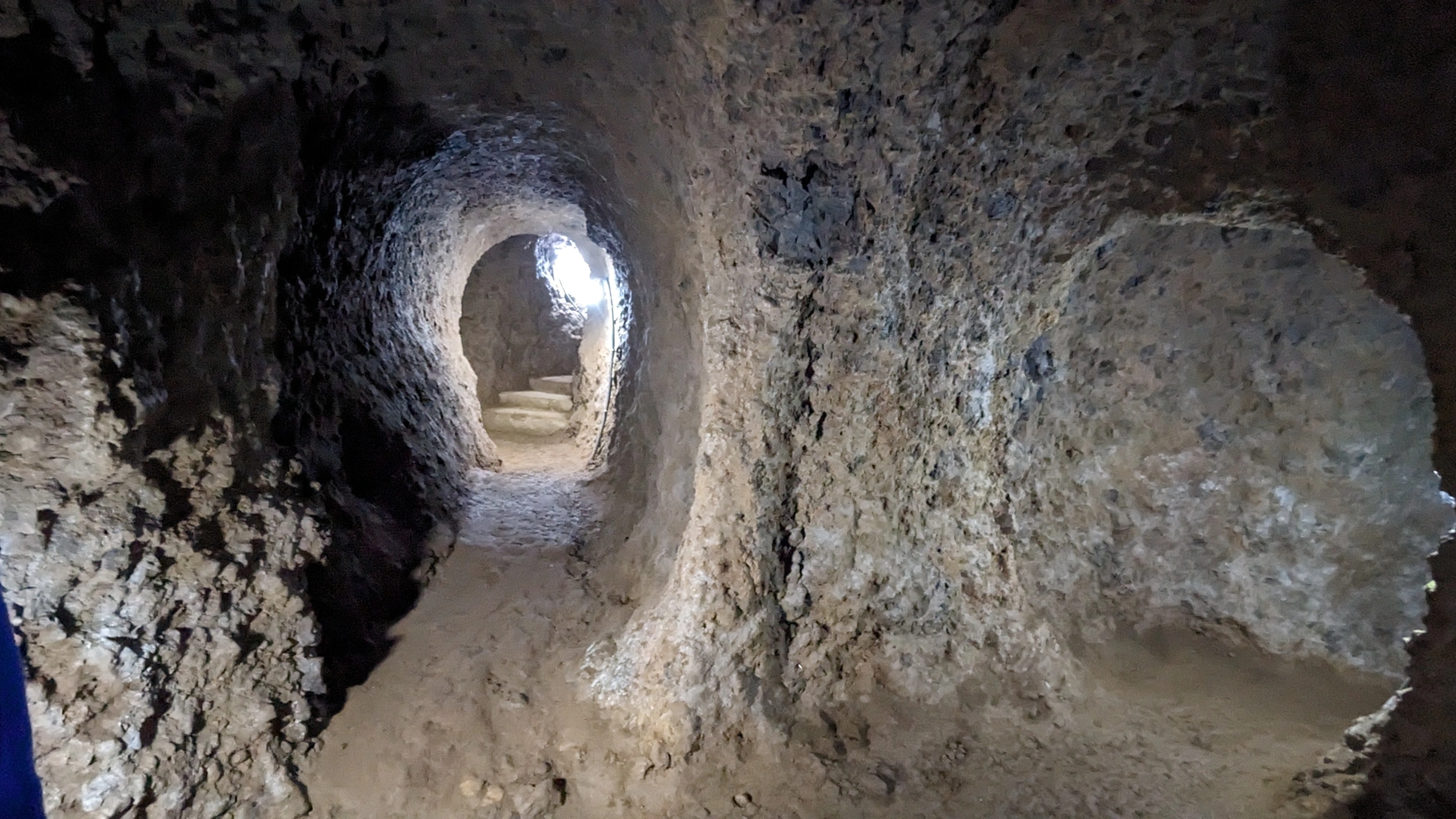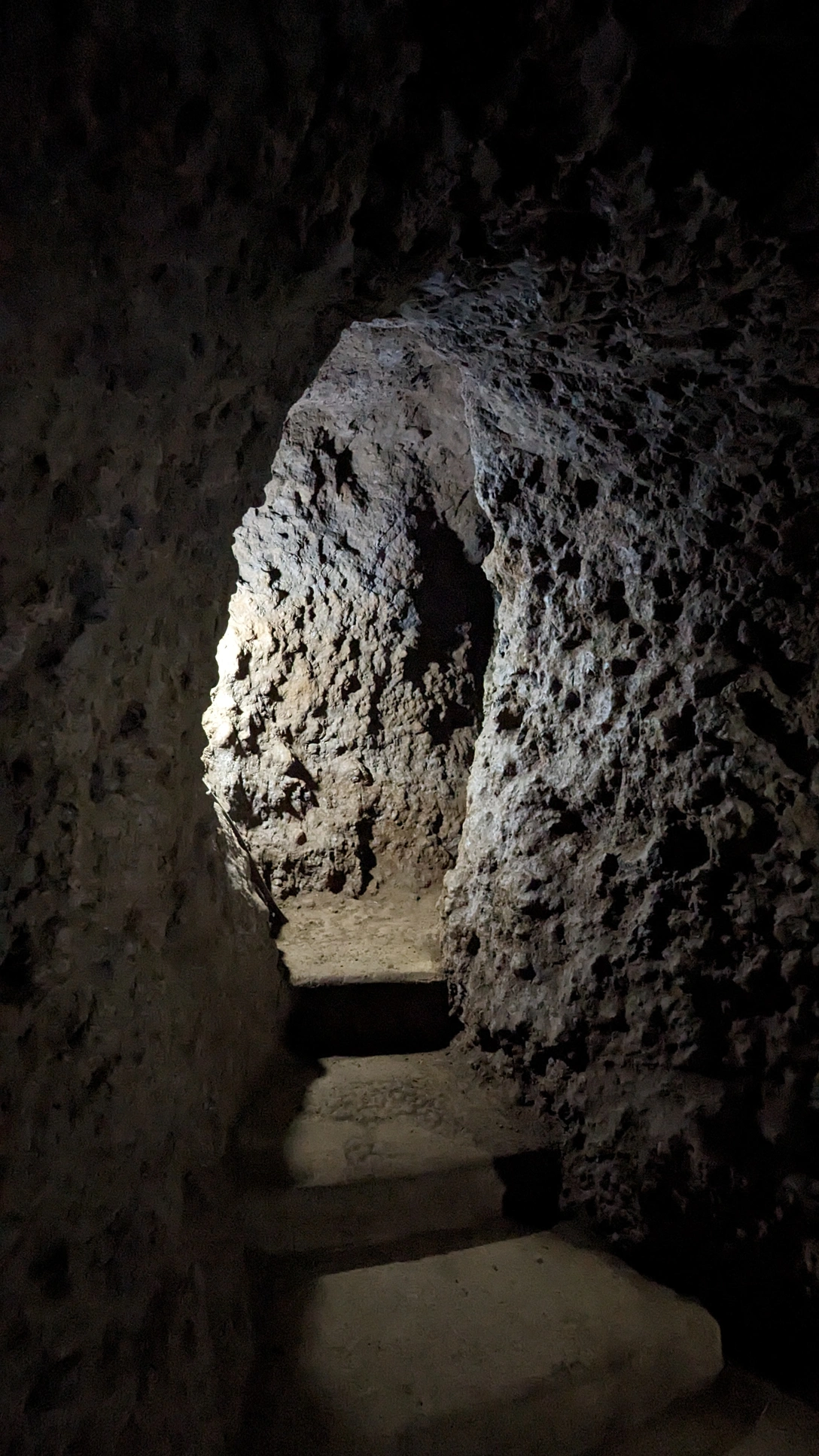Region: Kilimanjaro
Access: By road
Attractions: The caves, culture items and arts
Activities: History, cave walking, art
Accommodation: Available nearby
Best time to visit: All year round
Useful link: Marangu Defences - Wikipedia
Marangu Chagga Caves were designed in such a way that they could accommodate up to 70 families and had various segments for security, water trenches, ventilation, and living rooms for each family
The ancient Chagga caves are man-made caves that were built around the 18th century by the Chagga as a defense and hiding against the Maasai invaders, who in search of food and water during dry seasons on their land, would trek to the Chagga settlements, attack them, and seize their food and animals. The caves were designed in such a way that they could accommodate up to 70 families and had various segments for security, water trenches, ventilation, and “living rooms” for each family. The ventilations were drilled on the upper side of the caves, and at the upper ground end, poisonous trees that could not be attacked by animals or snakes were planted as camouflage for Maasai invaders not to notice any sign of settlement underneath the plants
The caves/tunnels had one of the ends towards the nearby flowing rivers and they were only used for specific periods of time when Maasai attacks were looming. When the Chagga went into the caves, they would collect food and everything they had, leaving nothing on the ground. Because of this trick, Maasai found it hard to get ahold of the Chagga so they came up with two approaches to either kill the Chagga within the caves or force them to come out
– They smoked fire and chili through the tunnels. However, the Chagga used animal skins which were placed in such a way that they would diverge the smoke to somewhere far from their settlements within the tunnel
– After the first attempt failed, the Maasai decided to flood the tunnels. However, the Chagga were ahead of them in thinking and the meandering structure of the cave was designed to diverge the waters to the other end of the river. When the Maasai threw rocks into the tunnels, the Chagga would break traditional pots ‘vyungu’ filled with water to trick the Maasai into thinking that there was nothing but water in the tunnels
The tribal war was also fueled by the Maasai’s tendency to forcingly impregnate young Chagga girls. The Chagga, as a retrospective action, would then kill the young children with Maasai roots before they grew past 5 years so as not to have mixed blood among them. This rivalry between Chagga and Maasai was then calmed down by Mwl. Nyerere’s Ujamaa policy after independence and since then the two tribes have lived harmoniously with each other
The ancient Chagga caves are man-made caves that were built around the 18th century by the Chagga as a defense and hiding against the Maasai invaders, who in search of food and water during dry seasons on their land, would trek to the Chagga settlements, attack them, and seize their food and animals. The caves were designed in such a way that they could accommodate up to 70 families and had various segments for security, water trenches, ventilation, and “living rooms” for each family. The ventilations were drilled on the upper side of the caves, and at the upper ground end, poisonous trees that could not be attacked by animals or snakes were planted as camouflage for Maasai invaders not to notice any sign of settlement underneath the plants
The caves/tunnels had one of the ends towards the nearby flowing rivers and they were only used for specific periods of time when Maasai attacks were looming. When the Chagga went into the caves, they would collect food and everything they had, leaving nothing on the ground. Because of this trick, Maasai found it hard to get ahold of the Chagga so they came up with two approaches to either kill the Chagga within the caves or force them to come out:
– They smoked fire and chili through the tunnels. However, the Chagga used animal skins which were placed in such a way that they would diverge the smoke to somewhere far from their settlements within the tunnel
– After the first attempt failed, the Maasai decided to flood the tunnels. However, the Chagga were ahead of them in thinking and the meandering structure of the cave was designed to diverge the waters to the other end of the river. When the Maasai threw rocks into the tunnels, the Chagga would break traditional pots ‘vyungu’ filled with water to trick the Maasai into thinking that there was nothing but water in the tunnels
The tribal war was also fueled by the Maasai’s tendency to forcingly impregnate young Chagga girls. The Chagga, as a retrospective action, would then kill the young children with Maasai roots before they grew past 5 years so as not to have mixed blood among them. This rivalry between Chagga and Maasai was then calmed down by Mwl. Nyerere’s Ujamaa policy after independence and since then the two tribes have lived harmoniously with each other
The Maasai-Chagga tribal war was also fueled by the Maasai’s tendency to forcingly impregnate young Chagga girls


Interesting facts about the Ancient Chagga Caves
- The caves have been around for over 200 years, though not every part of the cave is accessible right now
- The architecture of the caves is one of the best demonstration of human survival instincts
- Previously, the caves were not used for any activities until a recommendation by the UN in 1989 to add the caves as one of the activities for someone summiting Mount Kilimanjaro via the Marangu route
Getting to the Ancient Chagga Caves
These caves are found in Marangu, a few kilometers away from Himo Junction and the Kenya – Tanzania border at Holili. Kilimanjaro International Airport is about 80 km away from the caves but the road is well tarmacked and paved for cars to reach the caves. The caves may be reached by car, motorcycle, or by foot. At the cave is a small hut where the history of the caves will be narrated to you before visiting the caves. At the site, you will also learn about the Chagga traditional huts and a few things about the Chagga tribe – their hut styles, how families lived under one roof and how they kept their animals with them in these huts



















